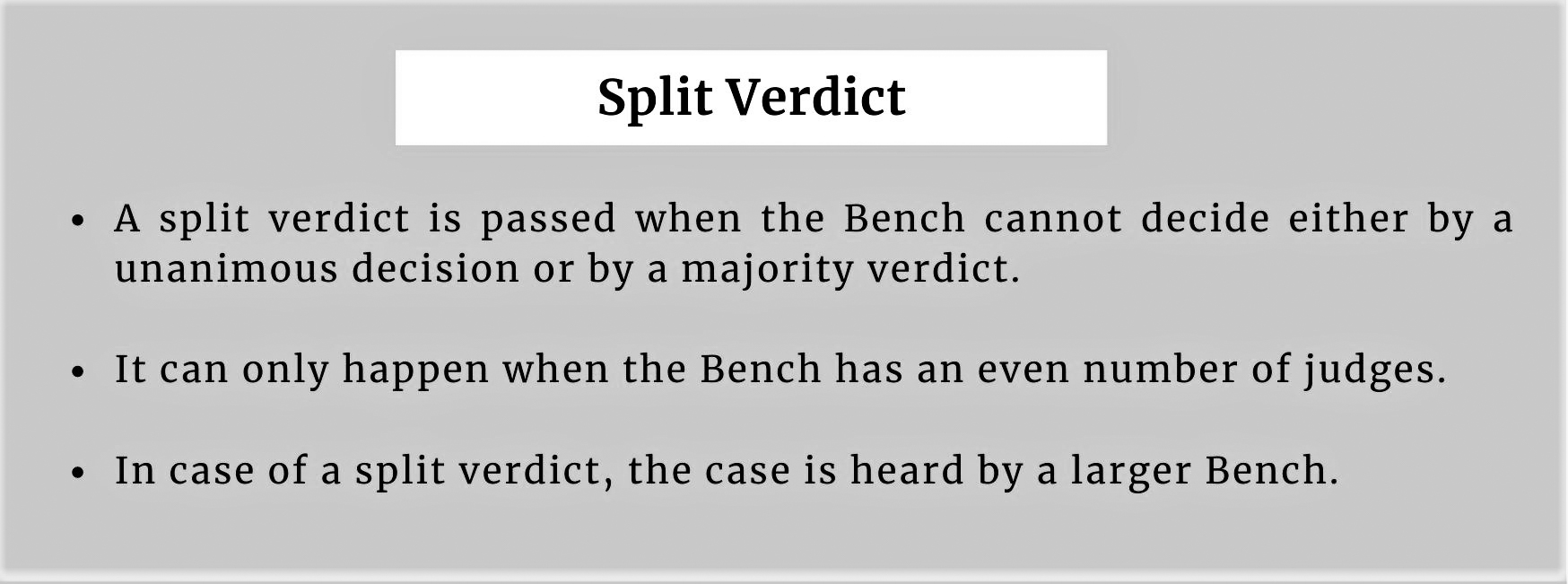- Home
- Prelims
- Mains
- Current Affairs
- Study Materials
- Test Series
The landmark Bijoe Emmanuel case cited by SC judge who favours lifting the Karnataka hijab ban
The Supreme Court delivered a split verdict in the hijab ban case with one of the two judges upholding the Karnataka High Court order on validating the government’s ban, and the other set aside the High Court ruling.


Religious freedom protected under the Constitution
- The Preamble of the Constitution states that India is a secular country.
- Article 25 to 28 of Part-3 (Fundamental Rights) of the Constitution confers Right to freedom of religion.
- Article 25(1) - Guarantees the freedom of conscience and the right freely to profess, practise and propagate religion.
- However, the state can restrict the right for grounds of public order, decency, morality, health and other state interests.
- Article 26 - Talks about the freedom to manage religious affairs subject to public order, morality and health.
- Article 27 - States that no person shall be compelled to pay any taxes for the promotion or maintenance of any particular religion.
- Article 28 - Talks about the freedom as to attendance at religious instruction or religious worship in certain educational institutions.
In S R Bommai vs Union of India (1994), the Supreme Court said that the state should free itself from religious affinity.
Hijab case
- The dispute erupted in Karnataka, when some Muslim students who wanted to wear hijab to classes were denied entry on the grounds that it was a violation of the college's uniform policy.
- The Karnataka government issued an order stating that uniforms must be worn compulsorily where policies exist and no exception can be made for the wearing of the hijab.
- Several educational institutions cited this order and denied entry to Muslim girls wearing the hijab.
- Petitions were filed in the Karnataka High Court on behalf of the aggrieved students.
Karnataka High Court judgement
- The Karnataka High Court made three primary findings in its judgment.
- Essential practice- It held that the use of a hijab is not essential to the practice of Islam.
- Thus, the right to freedom of religion was not violated.
- Right to freedom- It ruled that there exists no substantive right to freedom of expression or privacy inside a classroom and, therefore, these rights were not at stake here.
- In High Court’s belief, classrooms are “qualified public spaces” where individual rights must give way to the interests of “general discipline and decorum”.
- State discrimination- It held that the ban did not stem directly out of the government’s order, which only called for a uniform dress code to be prescribed by the State or school management committees.
- Hence, the law did not discriminate, either directly or indirectly, against Muslim students.
Essential religious practices test
- In Bijoe Emmanuel vs State of Kerala (1986), students of the Jehovah’s Witnesses denomination were allowed to abstain from singing national anthem as it was claimed to contradict their religious faith.
- In 2004, the Supreme Court held that the Ananda Marga sect had no fundamental right to perform Tandava dance in public streets, since it did not constitute an essential religious practice of the sect.
- The Supreme Court of Canada in Multani case (2006) upheld the right of a Sikh student to wear a Kirpan while attending the class, without harming others.
- In 2016, the Supreme Court upheld the discharge of a Muslim airman from the Indian Air Force for keeping a beard, distinguishing the case from that of Sikhs who are allowed to keep a beard.
 Supreme Court judgment
Supreme Court judgment
- The Supreme Court delivered a split verdict in the Karnataka hijab case.
- Support for hijab wearing- One of the judges held that ‘secularity’ meant ‘tolerance to diversity’.
- He said that asking a pre university schoolgirl to take off her hijab at her school gate is an invasion on her privacy and dignity.
- It is violative of the Fundamental Right given to her under Article 19(1)(a) and 21 of the Constitution of India.
- He referred to submissions that the hijab ban has led to dropout or transfer of students affecting their education.
- He also countered that although school was a public place, it was not correct to draw a parallel between a school and a jail or a military camp.
- Support for hijab ban- The other judge said ‘secularity’ meant ‘uniformity’ and upheld the Karnataka High Court ruling validating the ban on wearing hijab in classrooms.
- He views that hijab would affect the creation of a homogenous group of students and would create a segmented society.
- He rejected the argument that denying students the right to wear a headscarf also denies them the right to attend classes as it is a voluntary act of the students.
- He held that adherence to uniform was a reasonable restriction to free expression that reinforced equality.
Looking ahead
- The judgement results in any questions popping up in the mind of people.
- Would the same standards that banish a female hijab apply to a turban worn by a male Sikh student?
- Can government colleges deny education to students who are seen to be violating a uniform code?
- Is the hijab or even a full covering in any manner violative of the process of imparting education?
- Can a government committed to female education deny education to those it deems improperly dressed?
- Should implementation of a dress code be prioritised over imparting education to all that seek it?
- These questions will probably soon engage the attention of a larger bench.









 Latest News
Latest News
 General Studies
General Studies